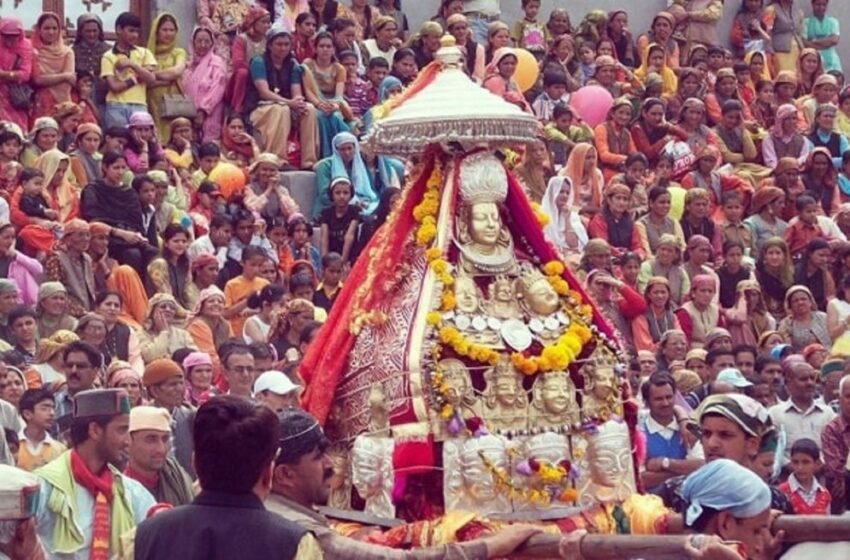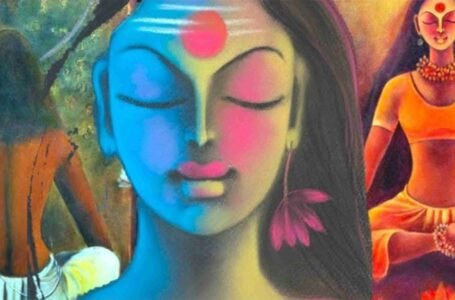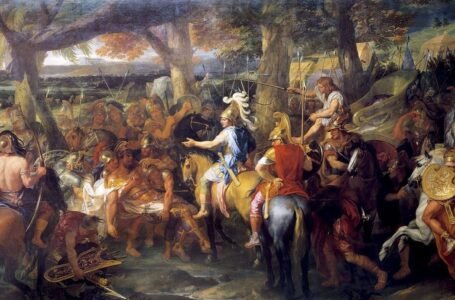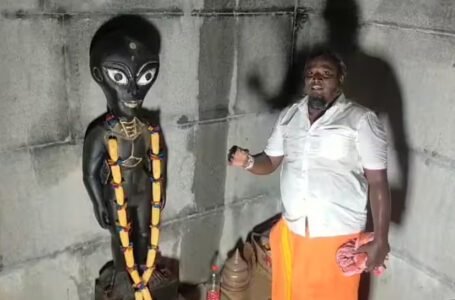Shalu Devta: The Revered Guardian of Himachal Pradesh’s Spiritual Legacy

Popularly known as the “Land of Gods,” Himachal Pradesh is a region where spirituality blends with culture. Here deity worship, whether induced by affection or fear, is embedded into the daily incubation of these localities. Shalu Devta is another powerful deity, worshipped by the local people throughout the rural and tribal communities. Shalu Devta is a celestial, eternal, and miraculous being, who has the welfare of all creatures, their eternal life, and even transcendent time in life.
In Himachal Pradesh, however, the worship of local deities goes beyond mere religious practice. It is simply a way of life, sometimes intertwining with and enhancing ancient traditions. In these ideals of protection, fairness, and prosperity, Shalu Devta himself is quite relevant. The presence of the deity is not only evident in temples and shrines built in his honour, but is further demonstrated by the various stories and rituals passed down through generations.
History
The worship of Shalu Devta dates back to as long as the hills of Himachal Pradesh themselves. There are beliefs regarding the origin of the deity that date back to antiquity when the early inhabitants of this region first began to worship natural forces, revered as protectors of their communities. Shalu Devta is considered to be one of these divine protectors representing both the spirit of the land and propagating contact between the world of materialism and the world of spirituality.
The bond between Himachal Pradesh and remote and rural villages has traditionally been a background for village life revolving around agriculture, cattle rearing, and simple community living. The local deities like Shalu Devta have been extremely important in promoting people’s unity, solving disputes, providing means for upholding social orders and protecting people from natural and supernatural dangers. The blessings of Shalu Devta were invoked to protect crops from insects, livestock from predators, and villages from diseases or calamities.
While God’s sanctuaries are simple those all over the country-their abodes reflect the depth of their popular faith and humility. The deities act as junctions in the village, performing rituals festivals celebrations and giving guidance should there be any human suffering. The oral legends and folklore concerning Shalu Devta have remained carefully passed down, often told during times of religious occasions or religious functions throughout the community to ensure that will remain a constant part of community identity.
Mythology
The myth of Shalu Devta is replete with tales of his divine deeds and his unflagging dedication to justice and protection. Local legends depict Shalu Devta as a fierce yet compassionate person who protects his followers from harm and ensures prosperity throughout his territory.
One of the most popular legends about Shalu Devta deals with his confrontation with an evil spirit that had infected the village with illness and despair. The villagers, helpless and desperate for relief, called for a divine presence by way of a special puja, pleading for divine intervention. Shalu Devta reached out and met their condition by manifesting himself to destroy this spirit and bring peace and good health back. It reinforces the idea of this deity as a protector and an incarnation of divine care in times of crisis.
Another myth tells us how Shalu Devta is believed to have guided a lost traveller through a very dangerous forest to safety. He also empowered him to overcome obstacles by teaching him the values of faith and resilience. The story goes to highlight that the deity acts as a guide, inspiring his devotees with confidence and hope.
In local iconography and rituals, the serpent is often shown alongside Shalu Devta, symbolising his connection with the natural world and his ability to traverse between planes. This linkage corresponds with the broader concept within Indian tradition that regards serpents as significant agents of power and sanctity, fertility, protection, and transformation.
Cultural Significance and Worship
Shalu Devta worship is strongly embedded within the cultural framework of Himachal Pradesh. The devotees of Shalu Devta consist primarily of agrarian and tribal communities who accept the deity as being closely involved in their day-to-day lives. The deity is worshipped during significant festivals or life events and through everyday prayers and offerings. This exemplifies the close relationship between the community and the divine protector.
Celebrations of Shalu Devta are lively and community-oriented, marked by music, dance, and hearty feasts. They are an opportunity for the people to show gratitude to the God and ask for blessings while reinforcing communal bonds. Rhythms for folk dances usually pay homage to the deity with traditional Himachali instruments, namely, the dhol and nagada, creating a sweet and solemn atmosphere.
Offering gifts, such as milk, grains, and sweet articles, is a common practice to give expression to gratitude for the protection and upkeep bestowed by the deity. In some corners of the region, animal sacrifices were carried out often in earlier times, a practice which has been stopped in many places as an outward expression of favour or appeasement during troubled times. These rituals, with great care and awe, are presided over by the respective priests and comply with the laws of the ceremony.
Temples of Shalu Devta take the form of wonderful and picturesque surroundings, nestled between mighty mountains, rivers, or lush, green forests. Surrounded by such beautiful nature, the devotees are spiritually elevated to divine realization and contemplation. The temples, with their delicate wooden carvings and traditional Himachali motifs, epitomize the cultural richness of the province.
Festivals and Community Gatherings
The festivals dedicated to the Shalu Devta are among the most awaited festivities among all communities that hold him in reverence. Each year, these occasions attract inhabitants from neighbouring villages to promote a sense of co-existence and unity.
The day of the main festival of Shalu Devta usually involves a great procession through the village with the idol or sacred object of the deity. The procession is delineated with drum beats, flute tunes, and the choirs of hymns and prayers. Dressed in their ceremonial dresses, the worshippers participate with great spirit to create an atmosphere full of life and divinity.
During festivals, priests or local elders perform group rituals as intermediaries between the deity and worshipping devotees. These rituals usually include lighting lamps, offering food, and folk chants or readings from sacred texts. The festivities end in a common feast when devotees together eat food, symbolizing oneness and divine blessings.
Impact on Local Beliefs and Identity
Shalu Devta’s influence is far wider than the spiritual sphere: it creates the cultural and social identity of the communities that worship him. The deity’s values and principles of protection and justice, and perhaps harmony, resound deeply with the people. They are something that they aspire to embody and showcase in their lives.
It is also through the tales and rituals surrounding Shalu Devta that the oral tradition and cultural heritage of Himachal Pradesh are preserved. Rituals thus keep a link between younger generations and ancestors, enabling beliefs and values to survive in the region for a long time.
Furthermore, the worship of Shalu Devta embraces the deep connection of the community to nature and their respect for the environment. The very association of the deity with natural things such as serpents, forests, and rivers demonstrate how to live in tandem with the natural order, lessons that are quite relevant even to this age within a rapidly changing world.
Modern Relevance and Preservation
Shalu Devta continues to flourish in the modern-day age and confronts contemporary challenges with the timeless essence attributed to it. Documentation and promotion of the deity’s legacy are being picked with vigour, with scholars, cultural organizations, and local communities working together to preserve this invaluable heritage.
These pursuits are important since urbanization, globalization, and changing lifestyles threaten the erosion of the region’s cultural and spiritual traditions. The worship of Shalu Devta reaffirms the differences of the Himachalis and gives their commitment to bequeath to the next generation the spiritual treasures of the region.
Conclusion
Shalu Devta, the beloved deity of Himachal Pradesh, embodies the spiritual and cultural soul of the region. His mythology, rituals, and festivals manifest the deep relationship of the divine with Nature and lay down the timeless teachings of faith, resilience, and harmony.
By worshipping Shalu Devta, the Himachalis reaffirm their commitment to their traditions, honour their ancestors, and strengthen their community bond. Therefore, the legacy of Shalu Devta stands as a testimony to the enduring vitality of spirituality through its power to inspire, illuminate, and unite; culturally, pass it wholly through the challenges of the modern age.


